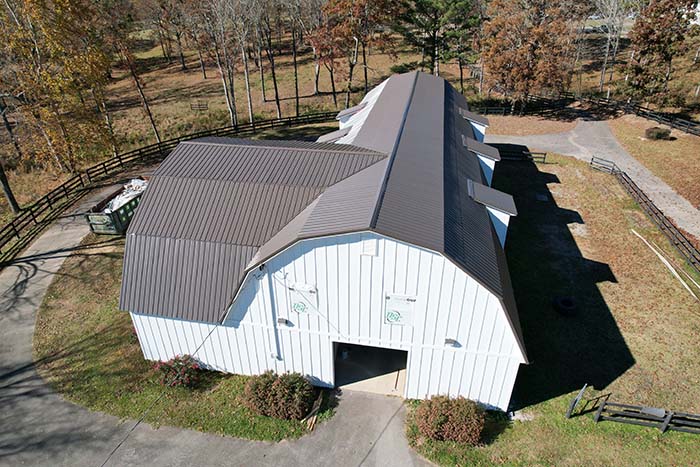How Much Does New Siding Cost? Vinyl Pricing and What Affects It
Installing new siding is a critical home renovation task that enhances curb appeal, increases home value, and offers protection against the elements. Vinyl siding, among the various options available, is a go-to choice for homeowners across the United States due to its cost-effectiveness and durability. If you’re wondering how much new siding costs, especially vinyl siding, and what factors influence this pricing, you’ve come to the right place.
Understanding Vinyl Siding Costs
Vinyl siding costs can vary widely depending on the quality, brand, and installation services. Homeowners generally pay between $2 to $7 per square foot for vinyl siding materials. Including labor, installation costs might range from $5,000 to $14,000 for an average-sized home. Understanding the nuances of these costs helps in planning and budgeting effectively.
Breakdown of Main Costs
- Materials: Vinyl materials make up about 30% to 40% of the total cost, with higher-grade sidings like insulated vinyl costing more.
- Labor: Accounting for 60% to 70% of the costs, labor involves preparation, installation, and potential removal of old siding.
- Extras: Additional costs may include insulation upgrades, waste disposal, and finish work.
Factors Influencing Vinyl Siding Costs
Several factors significantly affect the overall cost of vinyl siding installation:
1. Quality of the Vinyl
The spectrum of vinyl siding quality is broad. Options range from basic economy grades to high-end insulated varieties. High-quality vinyl is thicker, more durable, and often carries longer warranties, justified by better resilience against weather and maximum energy efficiency.
2. House Size and Design
The size of your home directly impacts the amount of material needed and labor involved. A sprawling ranch-style home will require significantly more labor and materials than a compact two-story house. Homes with intricate architectural designs, multiple levels, or unique features such as bay windows and eaves may also incur higher installation costs due to the complexity of fitting siding properly.
3. Installation Method
The method of installation whether overlaying existing siding or requiring the removal of old siding, affects costs. Removing old siding involves additional labor and disposal expenses, which can escalate the total cost significantly.
4. Geographic Location
Labor costs vary from one region to another. In areas with a higher cost of living or scarcity of skilled labor, you can expect higher pricing for siding installation. Areas prone to severe weather may also drive up costs due to demand for more robust materials.
Vinyl Siding vs. Other Materials
Contrary to materials like wood, cement, or brick, vinyl siding presents an economically viable option. While wood siding may reach and exceed $10 per square foot owing to its premium allure and aesthetic appeal, vinyl offers a sustainable and low-maintenance alternative.
Consider siding choices like choosing a car. Just as some opt for luxurious cars with high maintenance costs, others choose reliable, fuel-efficient models delivering value and longevity, much like selecting vinyl siding compared to its premium counterparts.
Advantages of Vinyl Siding
- Low Maintenance: Unlike wood, vinyl does not require regular painting.
- Cost-Effective: It is often cheaper to install and maintain.
- Durability: Modern vinyl can withstand harsh weather conditions.
Disadvantages of Vinyl Siding
- Potential Warping: Extreme heat can cause vinyl to warp.
- Cracking Issues: Vinyl can become brittle in cold weather.
- Environmental Concerns: While recyclable, the production process is not entirely green.
Future Trends and Considerations
As we gaze into the future, several trends and forecasts could reshape the vinyl siding market:
1. Eco-Friendly Options
The push towards sustainable materials is stronger than ever. Environmentally-conscious consumers lean towards vinyl siding solutions made from recycled materials or innovations aimed at reducing the carbon footprint during manufacturing.
2. Technological Advancements
Progress in polymer technology opens doors for even more resilient, weather-resistant sidings capable of maintaining affordability while enhancing longevity.
3. Market Dynamics
Demand for siding that provides better insulation, weather resistance, and requires minimal maintenance is on the rise. As energy efficiency becomes paramount, developments in siding technology may lead to even more competitive pricing structures.
For precise estimates, consult local contractors or refer to resources like Angie’s List or HomeAdvisor for tools to compare prices and find qualified professionals.
Tips for Homeowners
To ensure you get the best deal on vinyl siding, consider these practical tips:
- Get multiple quotes to compare costs and services.
- Check the contractor’s credentials and past work for quality assurance.
- Discuss all potential extra costs upfront including old siding removal.
- Verify warranty details before making a decision.
Conclusion
The cost of new vinyl siding varies due to several dynamic factors. With meticulous research and professional insight, homeowners can strike a balance between cost and enduring value. As the market evolves with technological and environmental advances, vinyl siding remains a pragmatic investment for those looking to enhance their property’s appeal and value effectively.

